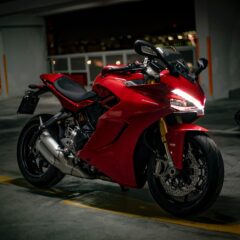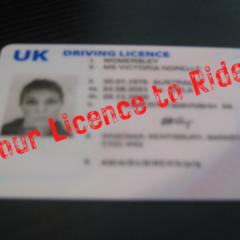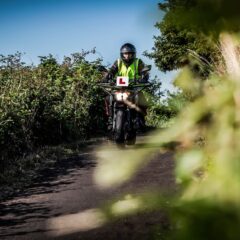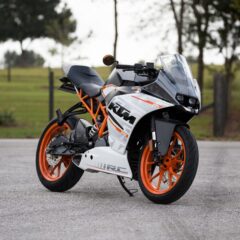
7 Top Motorcycle Accessories
With Christmas just around the corner, you might be wondering what to get your favourite motorcycle enthusiast or even a little something for yoursel...
 Phoenix Motorcycle Training LTD
Phoenix Motorcycle Training LTD
 Phoenix Motorcycle Training LTD
Phoenix Motorcycle Training LTD

So you’ve got your driving licence but want to ride a motorcycle too. UK motorcycle licence laws have changed quite a bit in recent times. Back in the 80s, if you had a driving licence, you could legally ride a 125cc motorcycle too. Today, things are a lot different.
Because many motorcyclists in the 80s were inexperienced, there were lots of accidents with high rates of motorcycle fatalities. So things had to change. Changes to motorcycle licencing laws happened gradually. Because of this, there are lots of caveats and details that you’ll need to pay attention to.
The main thing to keep in mind is that it pays to train for safety and rider technique before sitting your UK motorcycle licence test. Not only will it increase your chances of passing the first time, it will also improve your safety and enjoyment.
When you got your driver’s licence impacts the path you’ll need to take to get your UK motorcycle licence
If you’ve been driving a car since 2013, you’ll have a grasp of road rules as a driver. Riding a moped or motorcycle is a little different though. To get on two wheels, you’ll need to take Compulsory Basic Training. If you’re not sure this is for you, a try ride day is a great way to test the water.
A CBT lets you ride a 125cc moped or motorcycle for two years if you’re older than 17. After those two years are up, you’ll need to retake CBT training to renew your DL196 certificate. Instead of retaking a CBT course every two years, you can take full-licence training before your certification expires. That motorcycle licence is then valid indefinitely.
UK motorcycle licences are tied to the rider’s age and impose power restrictions for allowable motorcycles. The chart below gives the exact detail of the power restrictions related to various age groups. The thinking behind this is that more powerful motorcycles can be more difficult to control, particularly if you have a lighter frame or less experience riding.
Licence Type | Minimum Age | Size of training bike | Licence requirements | Size of bike you can ride after passing training |
CBT | 16 17 | Up to 50cc 125cc | Provisional or full UK driving licence | Up to 50cc (16yrs) 125cc (17+ yrs) |
| AM | 16+ | 50cc | Compulsory Basic Training (CBT), theory test, practical test on an all powered 2-wheeled moped. | 50cc |
| A1 | 17 to 19+ | 125cc | Compulsory Basic Training (CBT), theory test, practical test | 125cc |
| A2 | 19 to 24+ | 250cc | Theory and practical test (CBT must have already been obtained to completed these tests) or 2 years’ experience on A1 motorbike and a practical test | 35Kw (approx. 550 – 600cc) |
| A (full motorcycle licence) | 24 + (or after holding an A2 licence for a minimum of 2 years) | 600 cc | CBT, theory and practical test at 24 years of age or older, or hold an A2 licence for minimum of 2 years and pass a practical test at age 21 or older | Any sized bike |
So, you’ve been driving a car for more than two decades. You’ll be pretty familiar with the road rules as a car user. Thanks to the knowledge you’ve gained as a road user, you can jump on a moped up to 50cc and take to the road, no prior training required.
You won’t need to display L plates either. Even so, it’s wise to learn how to change gears and take corners before getting on the road with other traffic. A try-ride day is a good idea, and basic training is wise.
You should note that the top speed for most 50cc mopeds isn’t high enough for safe travel on faster roads. The smaller wheels make them ideal for getting around town, but less so for longer distances or faster travel. The highway code restricts travel on motorways for motorcycles under 50cc for this very reason.
If you’d like to ride a motorcycle or scooter with a higher-powered engine, you’ll need to take a little training. That begins with Compulsory Basic Training. Once you’ve been awarded your DL196, you can train for a full unrestricted UK motorcycle licence. That licence lets you ride on all roads on the highest-powered motorcycle you can wrap your legs around.
UK motorcycle licence rules used to be closely linked to driving licence rules. It seems crazy these days, thinking about the marked difference between driving a car and riding a motorcycle. Things are slowly but surely changing so that motorcyclists train for a basic level of skill before taking to the road. Just like drivers have to. Even if you’ve been trail riding for years, road motorcycles are a different beast and the techniques for riding vary too.
Whenever you got your driver’s licence, we’d recommend familiarising yourself with a motorcycle or moped before taking to the open road. A try ride day, CBT course or full-licence training will help you ride better. It’s not just about your safety, although that’s a big factor. It’s also about your enjoyment, confidence and the safety of other road users too. Get in touch if you want to learn more about taking to the road on two wheels.

With Christmas just around the corner, you might be wondering what to get your favourite motorcycle enthusiast or even a little something for yoursel...

If you love motorcycle riding, you’ve probably daydreamed about riding a motorbike for a living. A professional racer or stunt rider is OK for some...

Getting a UK motorcycle licence can seem a complicated process. Particularly when compared to a driving licence for a car. Whether you choose the pro...
This website uses cookies to personalise content, ads, and analyse traffic, sharing data with partners who may combine it with other information. See our Privacy Policy for more information.